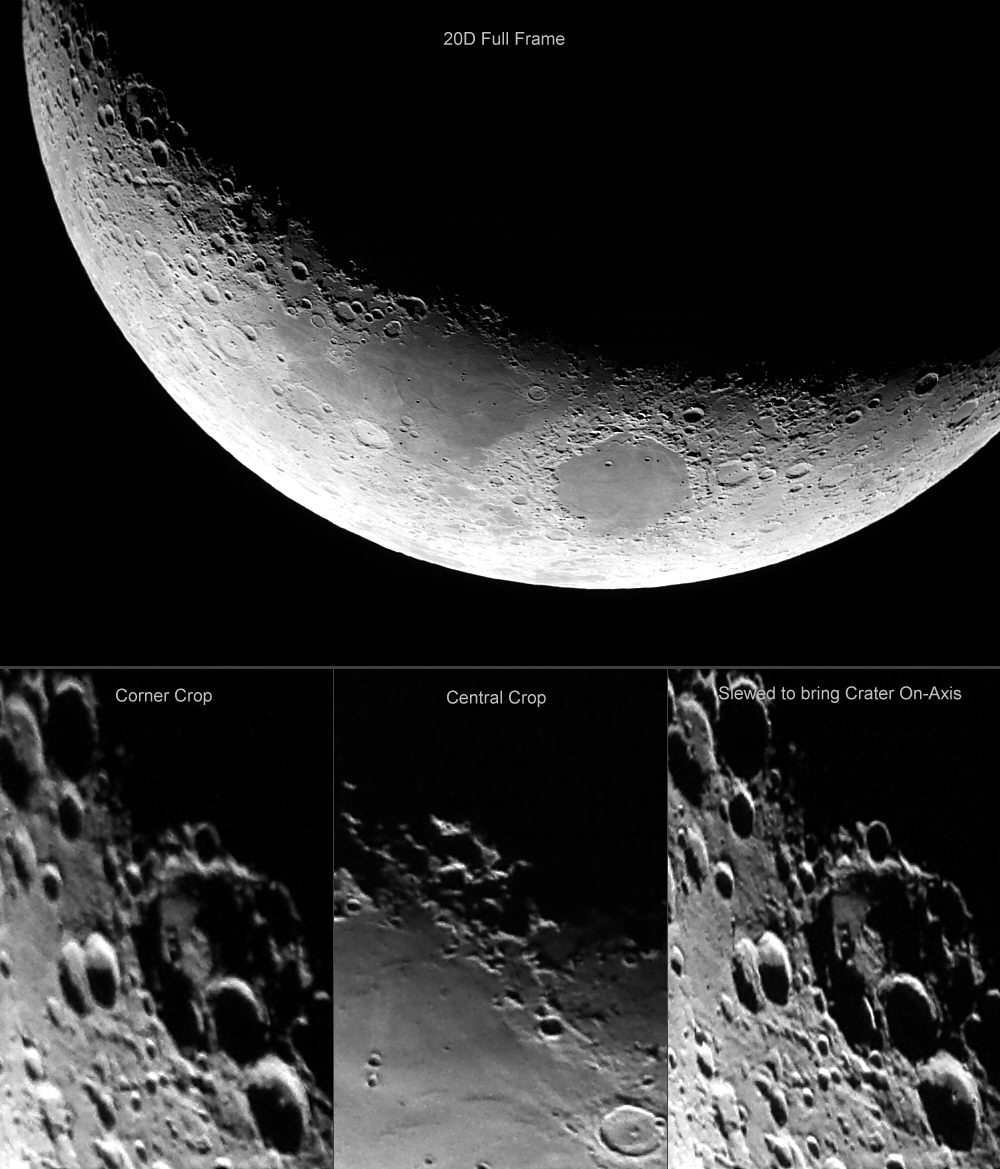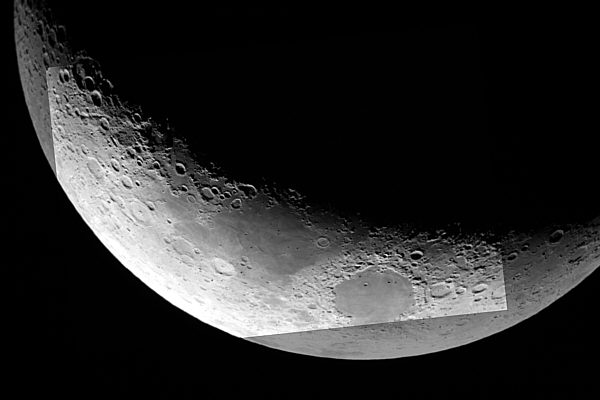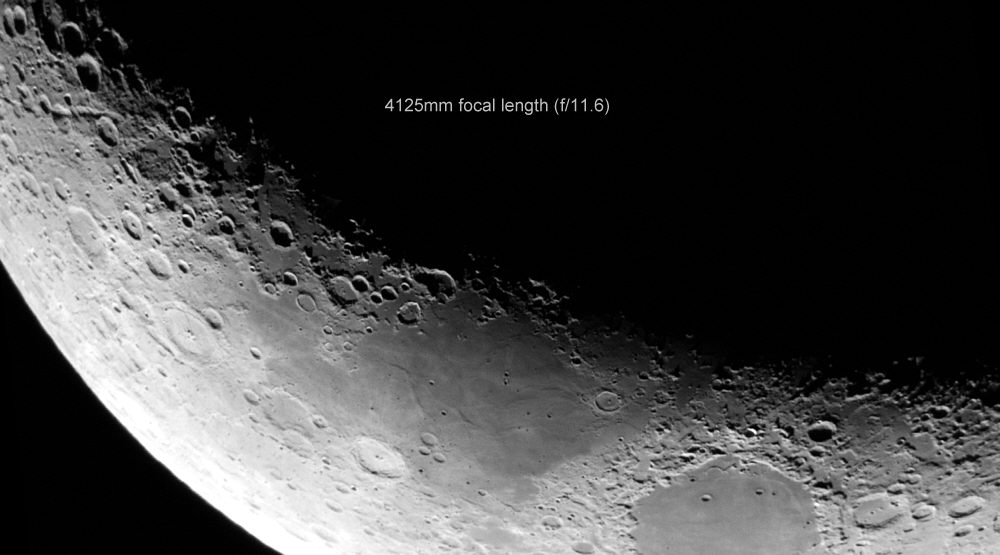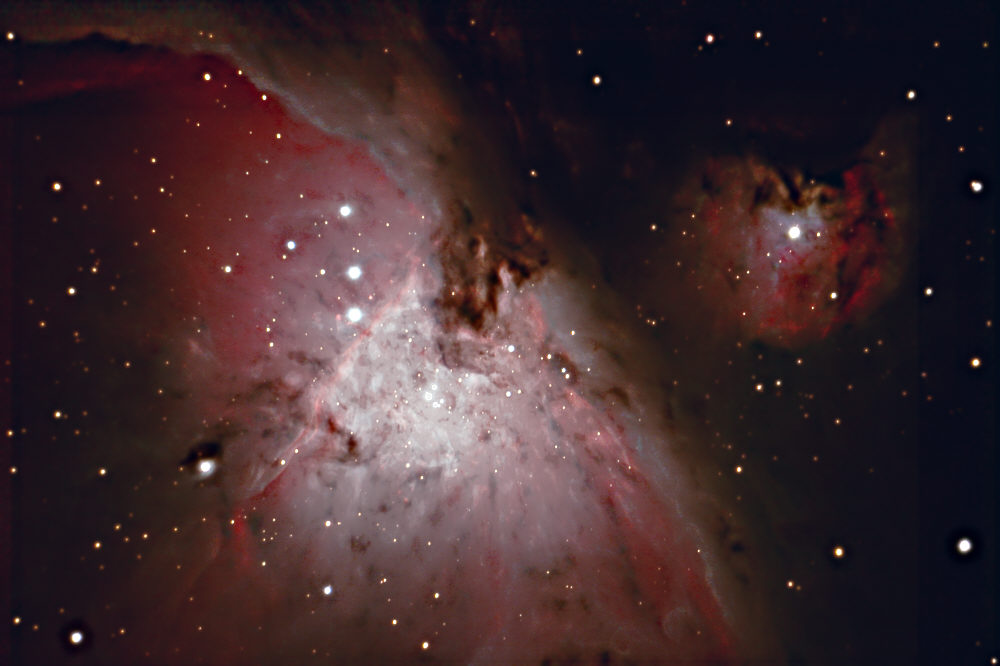
Focal Reduction for a C14
I found it rather frustrating not being able to achieve some focal reduction on a C14 and still end up with reasonable coverage of a 35mm format DSLR. Film was much more forgiving. When I switched to a smaller DSLR, a Canon 20D having a 22.5x15mm sensor, I was doubly disappointed. Using a Celestron f/6.3 Reducer/Corrector, together with the Celestron T-Adapter gave unacceptably severe vignetting, in addition to the field curvature issues inherent in SCTs. The usable area on the chip was simply too small for my liking. I decided to try reducing the back-focus by shortening the T-Adapter as shown below. Estimates indicated that if I end up with the C14 operating at between f/7.5 and f8 then there should be some hope for reasonable performance. This called for the back-focus to be reduced by about 4.5cm

Results shown below with the 20D attached to the T-Adapter stub. The modded 20D was recording all visible light + the Near IR (i.e. I was not using a UV/IR blocker). Rather than battling White Balance I decided to simply show you the Moon in monochrome. The C14 was operating at f/7.7 (2740mm focal length). No flat-fielding was used; hence the conclusion is that the vignetting across the whole frame is no longer severe. There are still some field curvature issues though. Check out the 1:1 crops below, from the center and from the corner.

It's easy to notice the sharpening up possible when I slewed the C14 to bring that crater from the corner, on the left, to the center of the field of view, crop on the right. Is the setup acceptably sharp? That's in the eye of the beholder! One can easily crop off the extreme edges and still retain a pleasing 1:0.75 aspect ratio. Note that the C14+20D image scale at f/7.7 is 0.5 arc-seconds per pixel, so for deep sky imaging one would invariably be limited by the seeing, rather than the optics. Exposure for the above was 1/500sec, ISO 800. Realistically, SCTs are unsuited for producing large prints, so viewing the above 1:1 crops is overly critical. Many SCT imagers would probably be quite satisfied with web-sized end products, at a size similar to the full frame above, i.e. around 1000 pixels wide. So let us examine the field curvature issues at that size. Here is a full-frame shot at f/11.6 superimposed on a full-frame shot at f/7.7:

Now let us examine what 1000-pixel-wide quality we can expect at f/11.6, downsized from the full frame:

and the identical cropped and downsized area from the frame taken at f7.7:

I find it not at all obvious which is the sharper image overall; one has a patch here or there sharper, the other has other patches sharper. But in both cases the center is noticeably sharper. I have never noticed any "correction" of field curvature from the Celestron Reducer/Corrector, used as above or with an uncut T-adapter. To gauge whether the focal reduction is worth using one should look at the earlier full 20D frame. Resolution becomes ever worse as we go into the corners, but of course a focal ratio of f/7.7 allows the use of much shorter exposures than at f/11.6 (less than half the exposure time) to arrive at equivalent luminance levels, guiding/seeing become less critical, etc. But on a star field the edge stars become even more distended. Here is an example of the Trapezium that typifies the annoying distention of stars towards the edges of the frame, even at f/11.6:

Exposure data: Twenty-five 15-second exposures at ISO 1600, Canon 20D without any UV/IR blocking filter, C14 at f/11.6, Celestron CGE mount unguided.
For more stuff return to Samir's Home
To drop me an e-mail just
click on:
samirkharusi